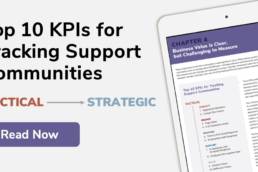The Community Manager is unlike any other position in the technology and online world. Rather than managing hardware or software, products, services or content, the Community Manager manages behaviors and interactions among the community’s members — readers, clients, prospects, analysts — whomever your community is designed to engage. It’s all about the members, which means it’s about managing people. More specifically, successful community management is about guiding those aspects of interpersonal interactions online that lead to greater engagement — both the quantity of interactions between members (member-to-member) and between the member and the community or company (Company/Community-to-member). There is a lot of demand for community managers of late, and I have been called upon to share my thoughts on what the community manager role really encompasses.
The Community Manager is the CEO of the community — the Chief Engagement Officer. However, unlike most CEO’s, the Community Manager cannot demand that members engage with each other or with the site. Instead, the Community Manager has to achieve the community’s engagement goals though indirect means, by focusing the members’ attention on areas within the community where they can interact with each other and with features and content on the site.
The Community Manager may have goals for membership, site traffic and revenue growth. But underlying all of those metrics is the difficult-to-measure member engagement metric — the quantity and quality of the interactions among members and with site content and features.
Even though most online communities are built on a sophisticated technology platform, the skills and techniques used by the Community Manager to build and sustain user engagement depend more on a keen appreciation of human behavior — online and off-line — and a willingness to attract, engage and delight members, than on any highly specialized technical knowledge.
The Community Manager shares some skill sets and activities with a wide range of job roles, including:
- Coach – career, life or even Little League
- Concierge
- Conference or meeting planner
- Customer service manager
- Education & training manager
- Knowledge center manager
- Marketing communications manager
- Matchmaker
- Membership chairman for an organization, club or association
- Newsletter editor/publisher
- Producer/editor for TV, radio, newspaper or magazine
- Product manager
- Professional meeting facilitator
- Referee
- Social psychologist
This long list of jobs should help broaden the ways a Community Manager thinks about their role, and suggest a range of approaches to meet the challenge of managing a professional networking community. The variety of activities included in a Community Manager’s job description can help determine the best ways to respond to the needs and issues that arise within the community. For example:
- Does a member need customer service or content to help solve a problem?
- Would more members become involved through a debate or from joining a collaboration project?
- Does meeting a growth target require a marketing approach or a little matchmaking?
- Should an issue within the community be resolved by coaching or a referee?
The various roles also suggest opportunities to build on existing skills and experiences and add new ones to the Community Manager’s repertoire.
Community Manager Engagement Strategies
There are three broad categories of member engagement activity:
- Connecting with other members
- Contributing content (user-generated content or UGC)
- Interacting with site content and other features
Within each of these three categories are a number of different actions or features available on the site. The Community Manager has an important role to play by encouraging member participation in each of them. Without going into the specific procedures needed to accomplish each task, here’s an outline of some ways the Community Manager can support engagement.
Connecting With Other Members
- Welcome and announce new members to the site
- Encourage new members to share something about themselves with the membership
- Point new members to areas of connection with existing members (alumni, geography,industry)
- Announce new special interest groups within the community
- Invite members to participate in community planning and governance activities
- Find members who attend major offline, face-to-face events and invite them to connect with each other online
- Identify members willing to “mentor” other members on the best ways to use the site and other online tools
Contributing Content
- Solicit information from new members on areas of greatest interest, and then guide them to those areas. If the area is not available, encourage the new member to post a Q&A start a forum topic or launch a special interest group.
- Encourage participation in Q&As by highlighting unanswered questions and calling upon members to help a peer
Interacting With The Site
- Highlight articles, polls, blogs and other content and solicit
- comments or ratings from members on the home page to direct traffic and encourage involvement
- Find points of connection between content on the site and members, and (sparingly!) ask for direct feedback on relevance
- Involve members in planning content, events and other site content activities
These member engagement examples are part of the Community Manager’s day-to-day activities. The basis for community management success is creating, encouraging, stimulating, guiding or managing interactions among the members of the community. When people come first, all win!



